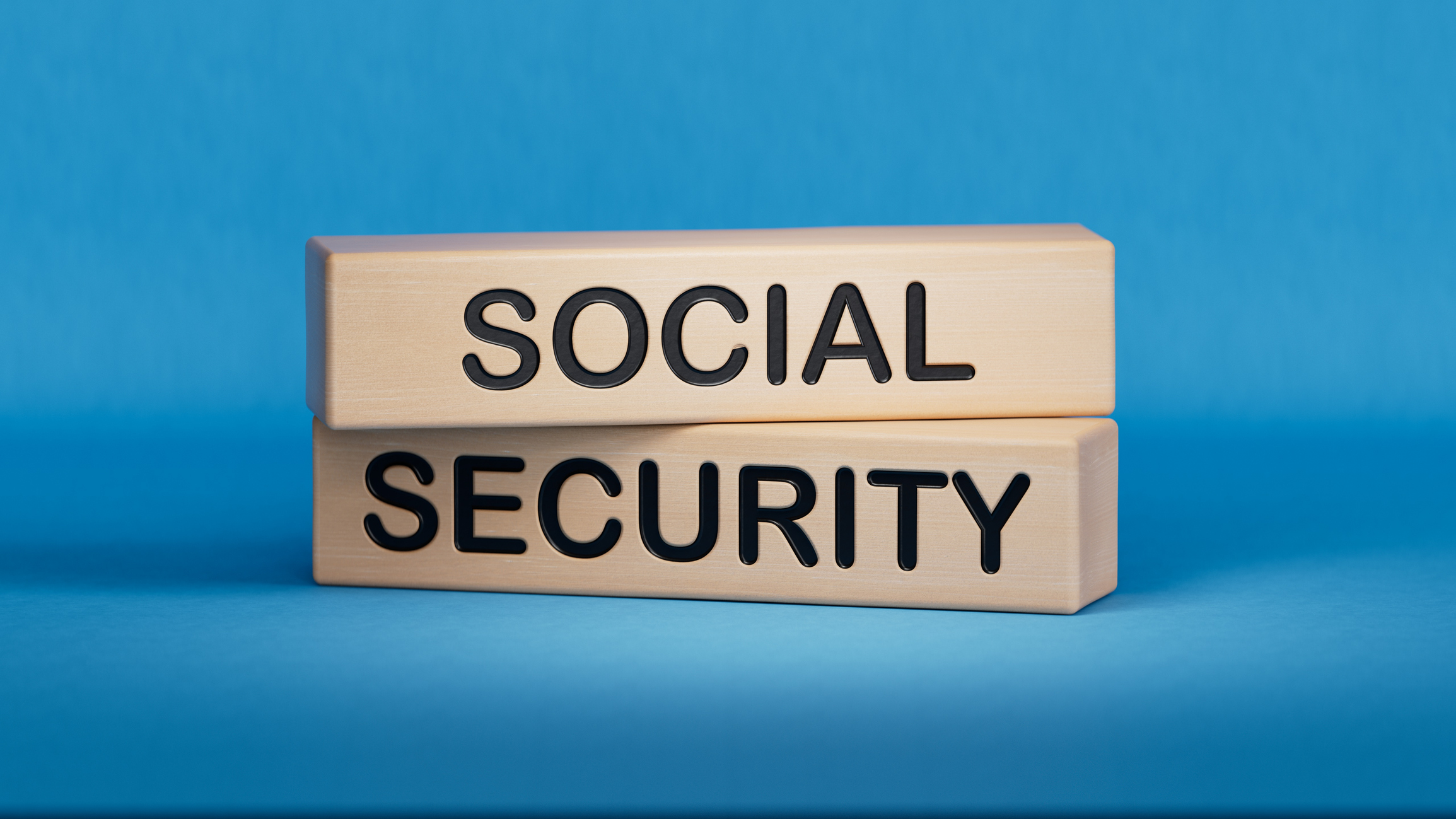New SECURE 2.0 Super 401(k) Catch-Up Contribution for Ages 60-63
SECURE 2.0 changes will allow older workers to increase their retirement savings. Here's what you need to know.


The SECURE 2.0 Act continues to reshape retirement savings, offering new opportunities for many to strengthen their financial future. Key updates include a higher required minimum distribution (RMD) age and expanded eligibility for 401(k) plans, making it easier for part-time workers to participate.
A major highlight for 2025 is the enhanced catch-up contribution limits for individuals ages 60 to 63. If you’re in this age group, you can now contribute up to $11,250 to your 401(k), 403(b), or governmental 457 plan, far above the standard catch-up amount.
These increased retirement contributions help you maximize your savings during your peak earning years and can lower your taxable income and reduce your overall tax liability.
From just $107.88 $24.99 for Kiplinger Personal Finance
Become a smarter, better informed investor. Subscribe from just $107.88 $24.99, plus get up to 4 Special Issues

Sign up for Kiplinger’s Free Newsletters
Profit and prosper with the best of expert advice on investing, taxes, retirement, personal finance and more - straight to your e-mail.
Profit and prosper with the best of expert advice - straight to your e-mail.
Here’s what you need to know about how the new “super catch-up contributions” work.
Related: IRS Updates Long-Term Capital Gains Tax Thresholds
Standard 401(k) and IRA Catch-Up Contribution Limits
Before we dive into so-called “super catch-ups,” it helps to review standard catch-ups. (Catch-up contributions are additional retirement savings allowances for individuals 50 and older, designed to help boost their retirement savings.)
These provisions allow eligible savers to contribute beyond the standard annual limits in various retirement accounts like 401(k)s and IRAs.
This could help make up for years of inadequate savings or maximize your tax-advantaged retirement funds. However, note that catch-ups are optional for eligible employees.
- For the 2025 tax year (returns you'll file in 2026), the standard annual deferral limit is $23,500, and the catch-up contribution limit for those age 50 and older is $7,500.
- For 2026 (returns typically filed in early 2027), the annual deferral limit is $24,500, and the catch-up contribution limit for those age 50 and older will be $8,000.
SECURE 2.0 enhanced catch-up contributions for ages 60-63
Under SECURE 2.0, beginning this year, 2025, individuals ages 60 to 63 are eligible for increased catch-up contributions in their retirement plans.
This applies to 401(k), 403(b), and governmental 457(b) plans that currently offer catch-up contributions. It’s also important to note that this change is optional for employers. So, each plan sponsor will decide whether to implement this feature in their retirement plans.
This enhanced catch-up contribution limit is $10,000 or 150% of the standard age 50+ catch-up contribution limit, whichever is greater.
For example, the catch-up limit for those 50+ for 2024 was $7,500. So, the IRS has announced that for 2025, the enhanced catch-up contribution limit for those 60-63 is $11,250. (For 2026, that amount remains the same.)
To qualify for the enhanced catch-up contributions, participants must meet specific criteria:
- Be 60, 61, 62, or 63 by the end of the calendar year
- Generally already contributed the maximum deferral amount
Note: Once participants turn 64, they revert to the standard age 50+ catch-up contribution limit.
And, of course, catch-up contributions are optional for employees.
2025 Enhanced Catch-up Contribution
Participant Age in 2025 | 2025 Standard Annual Deferral Limit | Catch-up Contribution for 2025 | Total 2025 Annual Contribution Limit |
50-59 OR 64 or older | $23,500 | $7,500 | $31,000 |
60-63 | $23,500 | $11,250 | $34,750 |
2026 Enhanced Catch-up Contribution: Just Announced by the IRS
For 2026 (returns filed in 2027) the following chart shows newly announced annual contribution limits for 401(k), 403(b), and 457(b) plans.
- The 2026 Standard Annual Deferral Limit has increased from $23,500 to $24,500.
- The 2026 catch-up contribution for ages 50-59 and 64 or older has increased from $7,500 to $8,000.
- The special "super catch-up" for ages 60-63 remains at $11,250.
Participant Age in 2026 | 2026 Standard Annual Deferral Limit | Catch-up Contribution for 2025 | Total 2025 Annual Contribution Limit |
50-59 OR 64 or older | $24,500 | $8,000 | $32,500 |
60-63 | $24,500 | $11,250 | $35,750 |
New Roth catch-up contribution rules for high-income earners
SECURE 2.0 also includes new provisions regarding Roth contributions for high earners. As Kiplinger has reported, full implementation of the IRS rules for this provision has essentially been delayed until 2026.
However, generally, as of 2025, if a participant's wages exceed $145,000 in the previous year (subject to cost-of-living adjustments), they must make catch-up contributions on a Roth basis.
Making catch-up contributions on an after-tax Roth basis means paying taxes on your retirement savings during years when you sometimes earn more.
For more information, see: New IRS Start Date for Mandatory Roth Catch-Up Contributions.
Super catch-up contributions: Bottom line
Introducing enhanced catch-up contributions under SECURE 2.0 is part of a broader effort to encourage more workers to save for retirement.
With that in mind, allowing increased savings during key pre-retirement years could help some who haven’t been able to save as much earlier in their careers.
However, whether this is a good idea for you will depend on several factors, including employers' ability and willingness to adapt their plans and systems.
Also:
- Setting aside an extra $11,250 a year might not be practical if you’re juggling other financial responsibilities, like paying down debt or handling medical bills.
- As mentioned, as of 2026, if you earn over $145,000, new rules will fully be implemented, so these extra contributions must go into a Roth account, which means paying taxes upfront. That can reduce your take-home pay and might not make sense if you expect to be in a lower tax bracket in retirement.
- Plus, if you already have a healthy retirement balance, focusing on other goals, like building an emergency fund or investing in more flexible accounts, could be beneficial.
Before making large catch-up contributions, consider your overall finances and priorities to determine whether this strategy is right for you.
Related
Profit and prosper with the best of Kiplinger's advice on investing, taxes, retirement, personal finance and much more. Delivered daily. Enter your email in the box and click Sign Me Up.

Kelley R. Taylor is the senior tax editor at Kiplinger.com, where she breaks down federal and state tax rules and news to help readers navigate their finances with confidence. A corporate attorney and business journalist with more than 20 years of experience, Kelley has covered issues ranging from partnerships, carried interest, compensation and benefits, and tax‑exempt organizations to RMDs, capital gains taxes, and income tax brackets. Her award‑winning work has been featured in numerous national and specialty publications.
-
 How Much Would a $50,000 HELOC Cost Per Month?
How Much Would a $50,000 HELOC Cost Per Month?Thinking about tapping your home’s equity? Here’s what a $50,000 HELOC might cost you each month based on current rates.
-
 My First $1 Million: Self-Employed Trader, 50, San Francisco
My First $1 Million: Self-Employed Trader, 50, San FranciscoEver wonder how someone who's made a million dollars or more did it? Kiplinger's My First $1 Million series uncovers the answers.
-
 Think You Know How to Be Happy in Retirement? These 9 Stats May Surprise You
Think You Know How to Be Happy in Retirement? These 9 Stats May Surprise YouWhen it comes to your retirement happiness, don't believe everything you hear. We've turned to solid research for the facts on finding your bliss in retirement.
-
 Is a New $25,000 Health Care Tax Deduction Coming in 2026?
Is a New $25,000 Health Care Tax Deduction Coming in 2026?Tax Policy A proposal from GOP Sen. Josh Hawley is adding to the chatter about health care affordability.
-
 Are You Middle-Class? Here's The Most Tax-Friendly State For Your Family
Are You Middle-Class? Here's The Most Tax-Friendly State For Your FamilyTax Tips We found the state with no income tax, low property tax bills, and exemptions on groceries and medicine.
-
 Costco Sues Over Trump Tariffs: What Could That Mean for Prices in 2026?
Costco Sues Over Trump Tariffs: What Could That Mean for Prices in 2026?Tariffs The retailer is making headlines not just for its famous hot dog and gold bars but for suing the Trump administration over tariffs.
-
 Social Security Benefits Quiz : Do You Know the IRS Tax Rules?
Social Security Benefits Quiz : Do You Know the IRS Tax Rules?Quiz Social Security benefits often come with confusing IRS tax rules that can trip up financially savvy retirees and near-retirees.
-
 How Are I Bonds Taxed? 8 Common Situations to Know
How Are I Bonds Taxed? 8 Common Situations to KnowBonds Series I U.S. savings bonds are a popular investment, but the federal income tax consequences are anything but straightforward.
-
 New 2026 Tax Change Could Mean More for Your IRA and 401(k) Savings
New 2026 Tax Change Could Mean More for Your IRA and 401(k) SavingsRetirement Savings Here's how the new IRS inflation adjustments will increase the contribution limits for your 401(k) and IRA in the new year.
-
 Capital Gains Tax Quiz: How Well Do You Really Know IRS Investment Tax Rules?
Capital Gains Tax Quiz: How Well Do You Really Know IRS Investment Tax Rules?Quiz Take our capital gains tax quiz to test your investment taxes knowledge. Learn about loss rules, holding periods, and tax incentives that could impact your savings.
-
 6 Tax Reasons to Convert Your IRA to a Roth (and When You Shouldn't)
6 Tax Reasons to Convert Your IRA to a Roth (and When You Shouldn't)Retirement Taxes Here’s how converting your traditional retirement account to a Roth IRA can boost your nest egg — but avoid these costly scenarios.